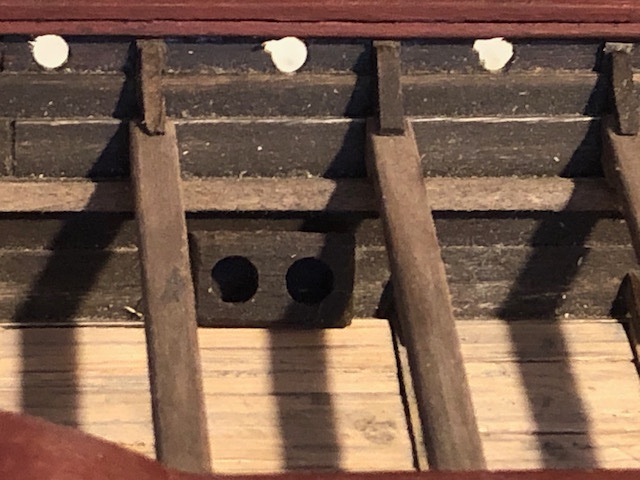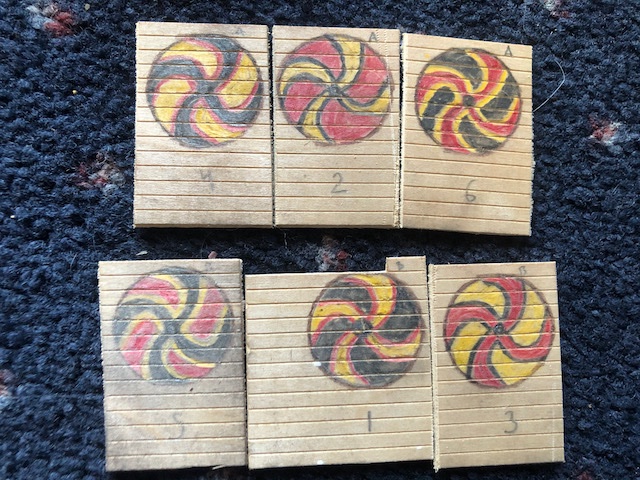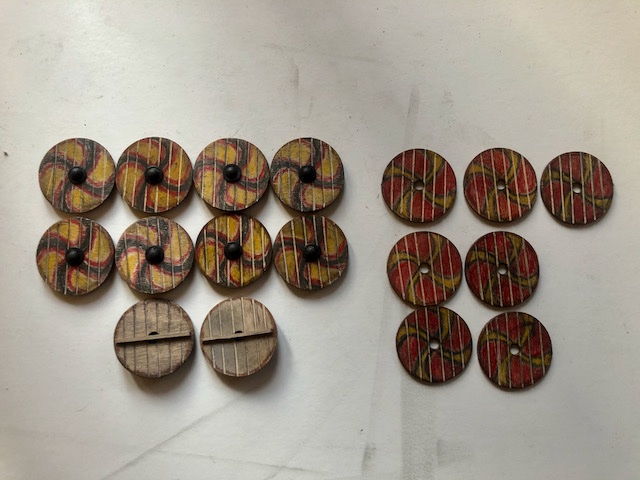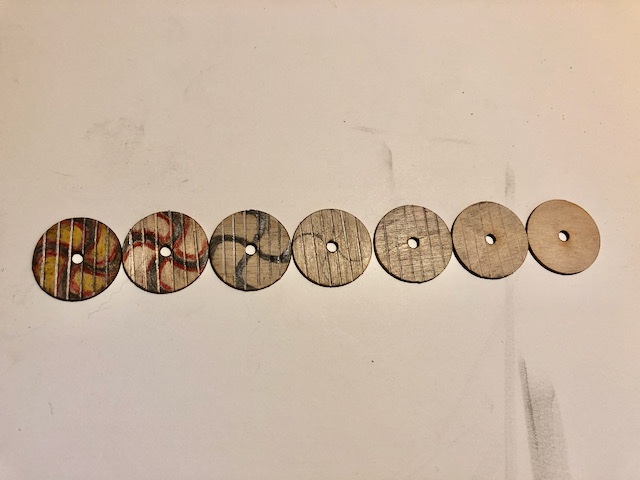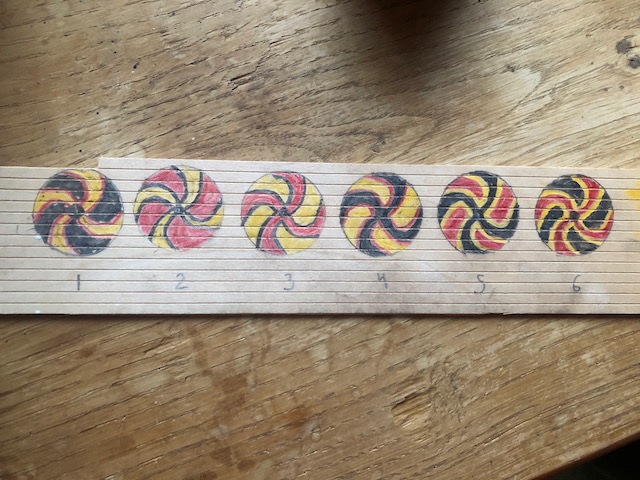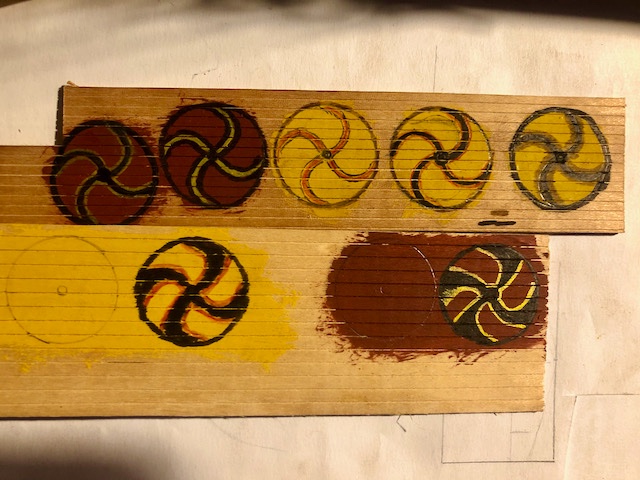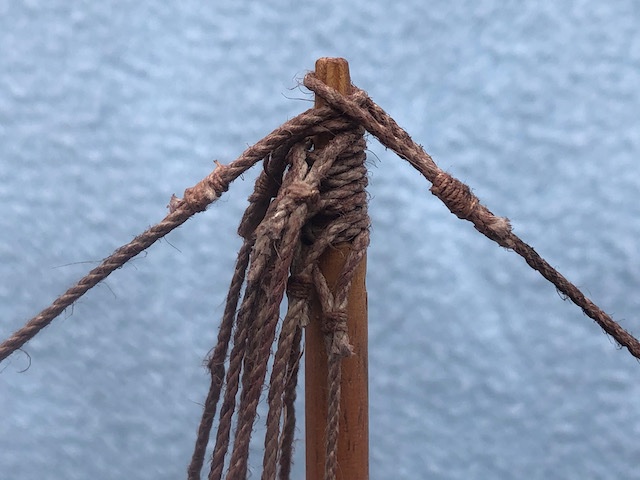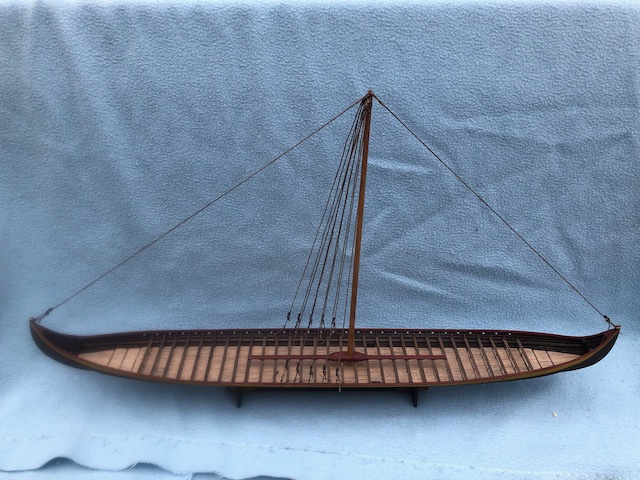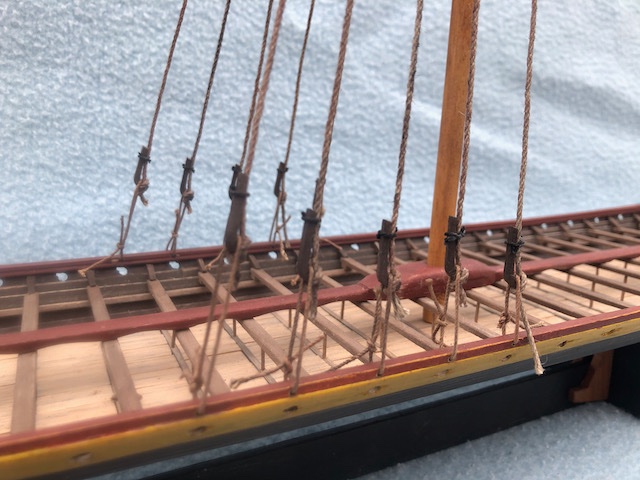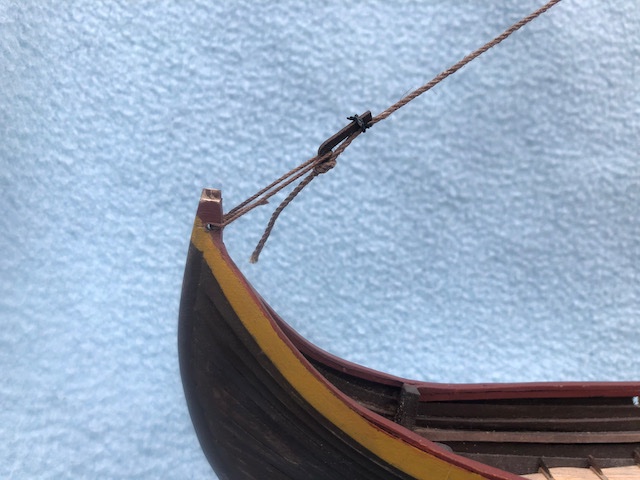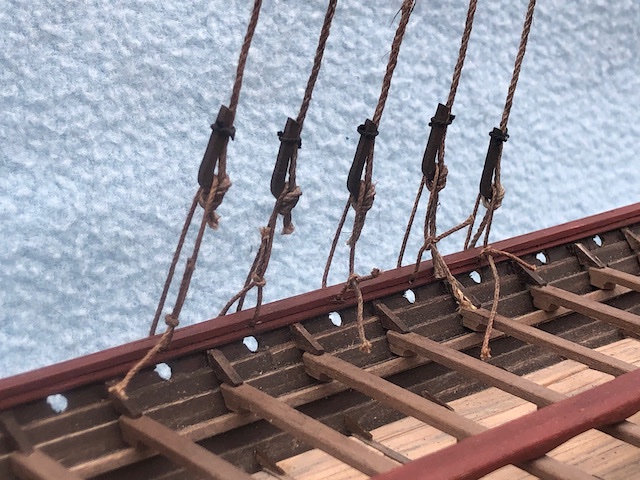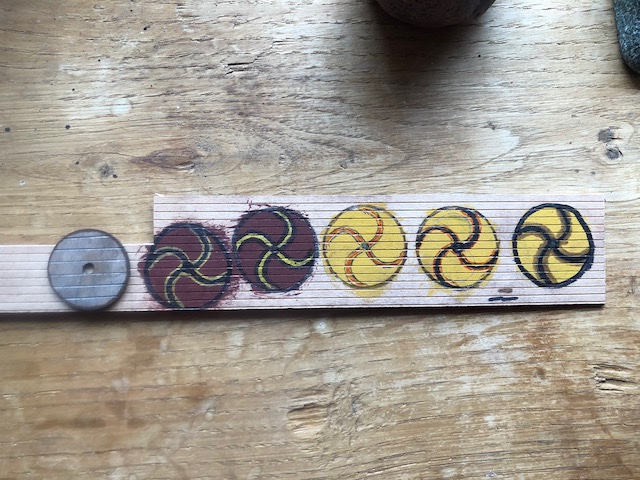-
Posts
3,489 -
Joined
-
Last visited
Content Type
Profiles
Forums
Gallery
Events
Everything posted by Cathead
-
My apologies, when I commented this was a separate thread and I did not realize it was a continuation of another thread (which has now been combined, making my comment look bizarre). Please disregard. I still look forward to following your future work!
- 30 replies
-
Looks like a beautiful start! And that's a very nice workshop. If I may make a suggestion, please consider renaming this to follow MSW's naming conventions for build logs (see this link). It will help people find and recognize the work you're doing. You can do this by clicking the three little dots at the upper right of your initial post, then selecting Edit. That will give you an option to change the title of the thread.
- 30 replies
-
No, I don't like using fixatives as they always seem to change the character of the surface and I like the raw wood. These won't be handled much so I don't think they need any further permanence. As for sails, I just responded on your log, giving away part of my surprise but sharing some links I've collected in my research on the subject.
-
Yep, I went through the same learning process and same conclusion. One of your photos shows the top of the beitass on the Skuldelev 2 reproduction (prototype for my longboat). Here's how it looks on my model based on following the instructions. This was a dubious decision but I couldn't find a photo of the block on the reproduction, so had little choice. And it seems to match that shown on other vessels, as you show above. Somewhere I read a possibly apocryphal account of a beitass coming loose and knocking a chieftain overboard to his death. Seems believable, that much stress on a loose pole.
-
I've been contemplating sails as well. No one really knows just how Viking sails were put together, but here are a couple articles I've found interesting. This one suggests that the diagonal striping was made of walrus hide, as a stiffener: http://www.amscan.org/app/uploads/2016/11/SR_Autumn16_Viking_Ships_article.pdf This one has a good background to Viking-era textile production and mentions a rare example of sailcloth being found: https://www.hakaimagazine.com/features/no-wool-no-vikings/ And Steven shared these two with me that talk about stitching and clothing making: https://www.cs.vassar.edu/~capriest/viktunic.html https://bjornthisway.wordpress.com/2019/11/05/needlework-in-the-viking-age/ My current plan is to make the sails out of paper, following a method I laid out here: https://modelshipworld.com/topic/15584-a-method-for-making-panelled-sails-using-paper/?tab=comments#comment-484457 Hope that gives you a start, I'm sure Steven will weigh in with more.
-
Made some nice progress on the shields over a few weekday evenings. To further consider different designs, I cut apart the single sheet of six designs into individual units (like paint sample swaths) so I could shuffle them and see how different combinations looked. For example, here are two sets where each row of three is fully complementary (each shield has a fully different combination of colors between background, swirl outline, and swirl center). Between the two rows, something always stays the same (e.g., two black swirls). I started with my favorite pattern and made ten as a test batch. Here's a sequence showing how I went from raw laser-cut shield disc to fully colored shield: From right to left: Raw shield Shield with planks scribed on using a shard-edged file Plank joints darkened with a pencil Swirl traced around a tool of the right diameter Swirl darkened in with black pencil Swirl border drawn in with red pencil Background filled in with yellow pencil After this, I blackened the tiny metal parts for the shield bosses and attached them using trace amounts of CA, weathered the back sides using grey pastel, and attached basic handles. The final touch was using brown pencil to gently color the rim on both surfaces and around the edge, hinting at leather binding used on the real thing (may not be visible in images, but definitely is in person). The image below shows ten shields of the first design (two showing their backs) and current progress through seven of the second design (Mrs. Cathead's favorite). These are ending up pretty dark, as handling them inevitable smudges a bit of color and the pencils aren't as vibrant as paint. But I kind of like this deeply weathered look, it matches the model well. I think they'll look really nice in a full set. They're also not that hard to do once I worked out the production sequence. I'm very happy with this approach, both because I think it looks good, and also because it means I can use the kit's shield discs. I had initially intended to make my own shields out of strip wood, thinking that would be more realistic, but this is so much less work for a result that is probably easily as good as I'd have struggled to cut clean circles and unevenness would have been pretty noticeable. I'll keep plugging away at shields. I'm also starting to think about sail-making and have had a good conversation with Steven (Louie) about this over PM. I have a fun idea for making this a bit unique as well. EDIT: Meant to say that I do think the plank seams show up more strongly than they would on the real thing, but I like that effect here because it emphasizes how these were really made. It might be more accurate to have these be much finer (or covered with a leather facing), but given that part of a model's role is to capture the "feel" of the real thing, I like how the strong seams emphasize the nature of shield construction. For the average viewer, this is more interesting and informative while not being "wrong". Sort of the same reasoning why I think it can be ok to have sail stitching be a bit more visible than in real life, depending on the intended purpose of the model. I like the idea of average/uninformed viewers to realize "oh, those shields are planks" or "oh, those sails are stitched panels" by looking at the model rather than having to be experts about it. I guess this is the teacher in me, but I want my models to inspire interest, not just be perfectly accurate to an expert.
-
Having little experience with either wood, I can't answer that directly, but a related question is whether you plan to paint the hull to match the real vessel or to display it as raw wood? If the former, the choice of wood won't matter nearly as much and you can supplement something else with little difficulty. As for your concern about filler use, it's part of the natural learning curve. It's pretty normal to need filler on your first planking attempt. Time and practice will help you develop the skills that allow for planking with minimal filler. However, this could be another reason to consider painting the hull rather than leaving it as raw wood, if you're not sure about being able to do the second planking with more than minimal filler (which will likely show up more strongly on a natural-wood hull).
- 89 replies
-
- Enterprise
- first build
-
(and 2 more)
Tagged with:
-
Welcome to MSW, we're glad you found us. I suggest you read this post, pinned at the top of the New Member Introductions section, which directly addresses questions of this sort. In short, Roger is correct, its only value is whatever personal connection you feel to it (which is not a dismissal, that can be quite powerful). If you wanted, you could read up on some the tutorials here and put some time into upgrading the model. There are simple things that could improve its condition and appearance, such as revising the rigging. This could help it feel more "yours" without a lot of investment.
-
Great story! That'd be a really neat model if you were able to decide on some parameters. Sadly, so many of these boats were pretty obscure and faded without a trace.
- 599 replies
-
- sidewheeler
- arabia
-
(and 4 more)
Tagged with:
-
Mark, good idea, but it's already reversed from the symbol in question (whose arms bend to the right, while mine bend to the left), but it still strikes both of us as resonant. However, we also both feel that (a) flaring the ends, (b) using colored pencils to mute the colors, and (c) using multiple designs tones down the resemblance enough.
-
Brian, I can't fully answer that. My sense is that shield symbology could represent allegiance (such as to your jarl or employer) but I'm not sure to what extent it could represent family lineage or personal identity. Here, I like the idea of a consistent theme related to the vessel's owner, especially given that this is an unusually powerful and expensive vessel. And artistically, I think a consistent theme will look better even if a bunch of individual shields could be accurate. For example, some green/grey shields would look cool on their own, but might clash with the consistent color-theme presentation of the model, and the average viewer would be more likely to notice the clash than to recognize that it's an accurate nod to Viking individualism. I certainly contradict myself here as I've painted my Viking figures as distinct individuals, though that's partly because they came with different designs cast on their shields, so I had little choice. I'm sure Steven could help inform both of us on this matter, and hope he does!
-
I agree, while that shield is pretty, I'm not basing any decisions on what TV producers do (nothing personal Chuck, I very much appreciate your interest). I was drawing from the shield designs given here and have been consulting Steven's link as well (given previously) for things like board width and pattern. I'm having way too much fun thinking about this, and last night (after I'd turned the computer off) went ahead and drew out all six color combinations using all colored pencils on another piece of wood: I actually kind of like the more muted, faded effect of the all-pencil version as opposed to the more vibrant paint/pen versions. They fit the weathered, muted artistic style of the vessel. And they're pretty easy to do. Also, thanks Steven for that great link on Viking colors! Got that bookmarked for sure now. So the question remains, if updated: which 1–3 designs look most appealing and would blend well together? I'll make my own decision but am legitimately interested in what other eyes see.
-
I ran this set of options past Mrs. Cathead, who (like James H and I) really liked the red shield with black swirls and gold edging. However, she also pointed out that the combination of color scheme and shape looked uncomfortably Nazi to her, and now I can't unsee that. So I did some thinking, and realized that if I flared the black swirls, it'd really cut down on the pseudo-swastika effect. See what you think: I also made another draft of the reverse-color version because I'm thinking about alternating these rather than making everything the same. If so, I need to get a red pen, though, the red colored pencil isn't vibrant enough to stand with the other ink-based colors. Thoughts on this updated version? I could even do a series of three or four different color variations on the same theme (like black shield with red swirls and gold edging).
-
Some nice progress! All the standing rigging is in place. This is still loose; I intentionally set it up so that I could tighten everything later on, to be sure that it all balances well. Pretty happy with this so far. Really starting to look like something. Given that, I had to figure out where the final tightening would happen. In theory it would happen on the thicker shroud running from the vantnale to the masthead. But I decided that was too tricky to get right. So, on the thinner lines that connect the vantnale to the hull, I tied a slipknot that allows one end of the loop to be tugged on, drawing the loop as tight as desired. This hides nicely in plain view as there has to be some kind of knot there anyway to finish off the loop, and I'll snug them right down along the inside of the hull. I realize that's rather dense to read. Maybe these photos help? Again, I can tug on one end of the thinner line to tighten the whole thing. Do you notice the steady upward progression of the vantnales above the hull as they proceed aft? That's because I was silly and measured all of the pre-made shrouds to be the same length, not accounting for the stacking along the top of the mainmast, so they gradually have to rise. Oops. Shouldn't matter too much, I doubt the real thing was nice and symmetrical. I followed the same method for the fore and aft stays: And here's what all ten shrouds and the two stays look like loosely piled up on the masthead. Definitely needed to extend that part of the mast, as discussed previously. Yes, these will compact down a bit when I tighten them, but still. I also started experimenting with shield design. The kit comes with 60 laser-cut discs, into which I plan to file gentle plank borders for realism. Then it's a matter of deciding what color pattern to use on the shield fronts. I did a bunch of research on various sites, and decided that I really like the four-spiral design. So here are five test versions of this, using different combinations of the red-yellow-black scheme the ship uses, tested on a scrap piece of pre-scribed wood. The left-most gray shield is one of the actual kit shields that I test-scribed but haven't colored. The coloration here is a combination of paint, marker, and colored pencil. I'd love some feedback on which designs you like/dislike, or new suggestions for combining aspects of them. I could also, in theory, use two versions and intersperse them. For reference, I don't plan to hang these along the sides. I'm going to stack them within the hull and hang some along the display base. Thanks in advance for opinions and ideas.
-
I agree that photos bring out every flaw in a model. The natural eye is far more forgiving. I also use only water-based paints as I work in my living room and have no interest in fumes or messy cleanup. I think this will look great on display when you're done!
-
Congratulations! She looks lovely and I enjoyed following your work.
- 48 replies
-
- dusek
- viking knarr
-
(and 1 more)
Tagged with:
-
Congratulations! This has been fun to follow.
- 20 replies
-
- Le Renard
- Artesania Latina
-
(and 1 more)
Tagged with:
-
OK, the talk is up on YouTube: The actual talk is about an hour, there's some dead-time lead-in, followed by a long Q&A and a video tour of the models at the end.
- 599 replies
-
- sidewheeler
- arabia
-
(and 4 more)
Tagged with:
-

Talk on Missouri River steamboat design & history, March 9, 2021
Cathead replied to Cathead's topic in Nautical/Naval History
OK, the talk is up on YouTube: The actual talk is about an hour, there's some dead-time lead-in, followed by a long Q&A and a video tour of the models at the end. -

Talk on Missouri River steamboat design & history, March 9, 2021
Cathead replied to Cathead's topic in Nautical/Naval History
Thanks, Toni! It was fun to develop and give.
About us
Modelshipworld - Advancing Ship Modeling through Research
SSL Secured
Your security is important for us so this Website is SSL-Secured
NRG Mailing Address
Nautical Research Guild
237 South Lincoln Street
Westmont IL, 60559-1917
Model Ship World ® and the MSW logo are Registered Trademarks, and belong to the Nautical Research Guild (United States Patent and Trademark Office: No. 6,929,264 & No. 6,929,274, registered Dec. 20, 2022)
Helpful Links
About the NRG
If you enjoy building ship models that are historically accurate as well as beautiful, then The Nautical Research Guild (NRG) is just right for you.
The Guild is a non-profit educational organization whose mission is to “Advance Ship Modeling Through Research”. We provide support to our members in their efforts to raise the quality of their model ships.
The Nautical Research Guild has published our world-renowned quarterly magazine, The Nautical Research Journal, since 1955. The pages of the Journal are full of articles by accomplished ship modelers who show you how they create those exquisite details on their models, and by maritime historians who show you the correct details to build. The Journal is available in both print and digital editions. Go to the NRG web site (www.thenrg.org) to download a complimentary digital copy of the Journal. The NRG also publishes plan sets, books and compilations of back issues of the Journal and the former Ships in Scale and Model Ship Builder magazines.




